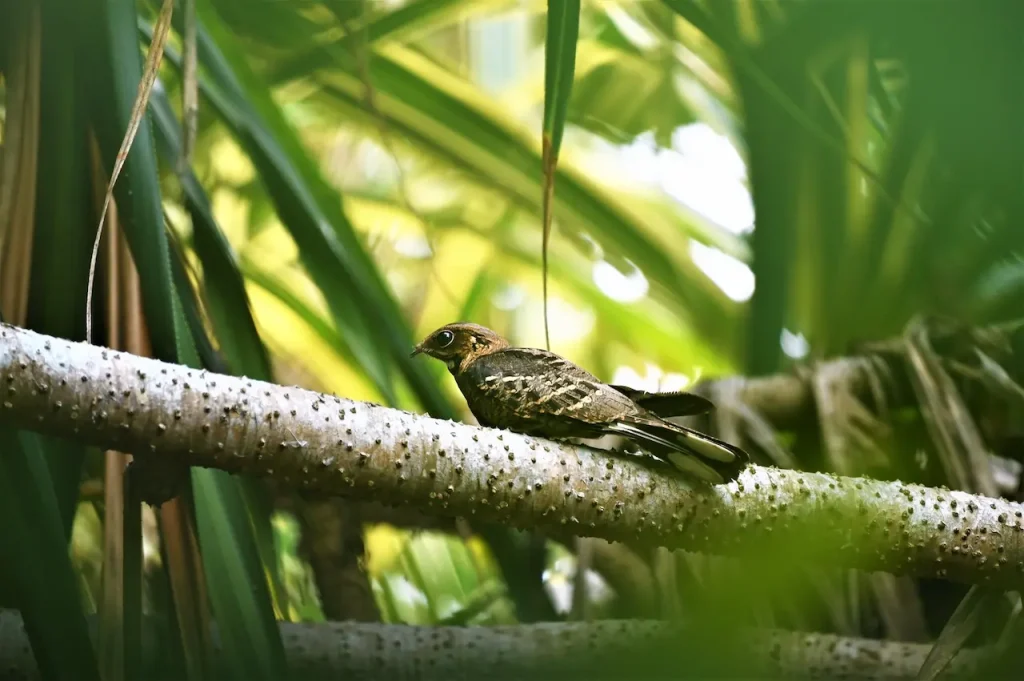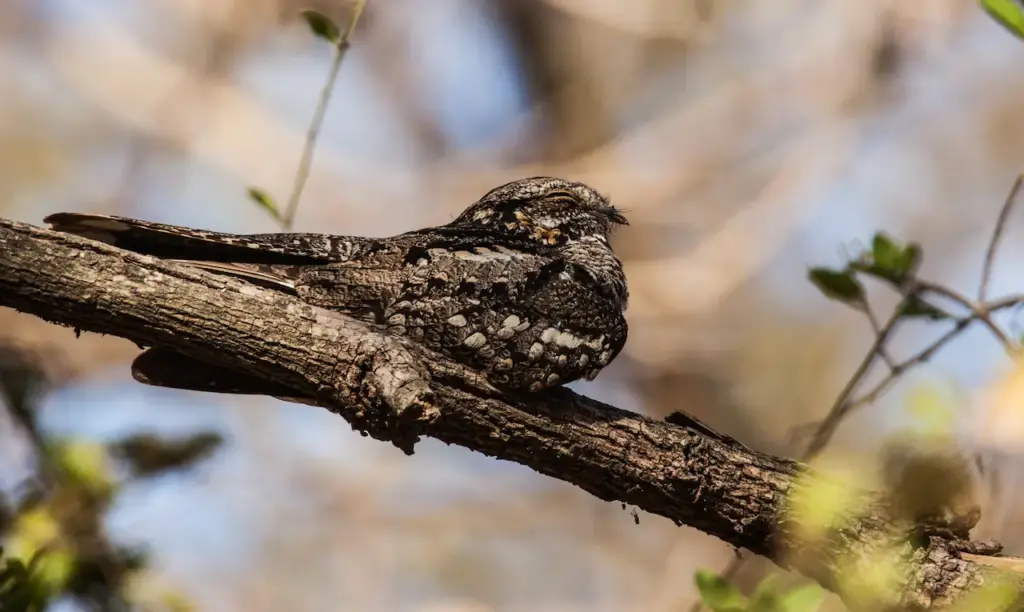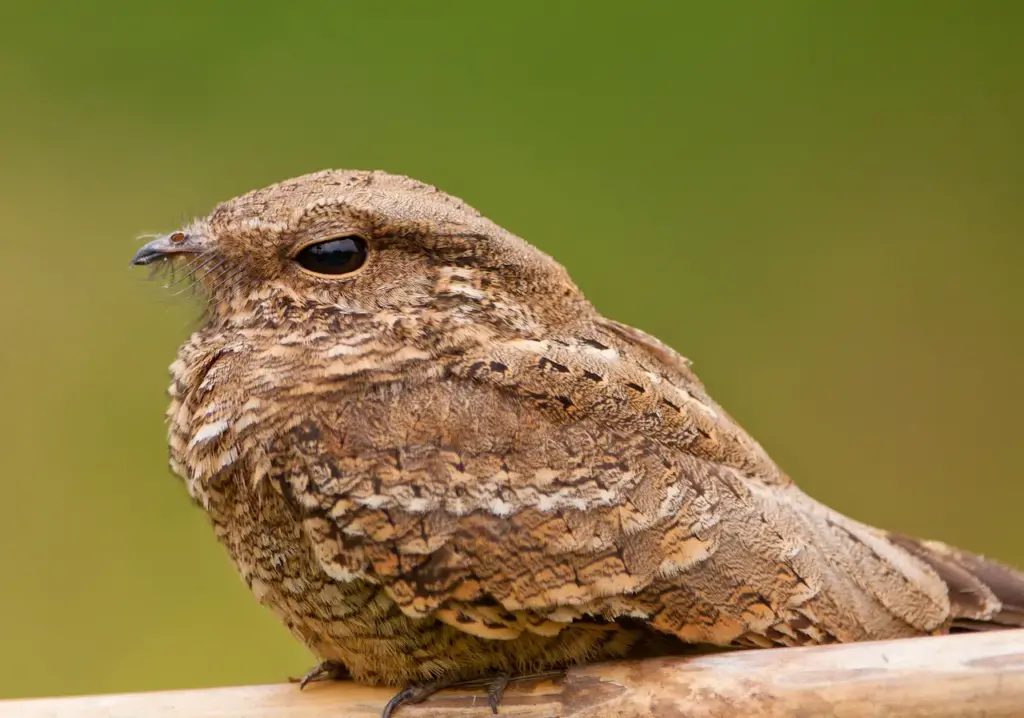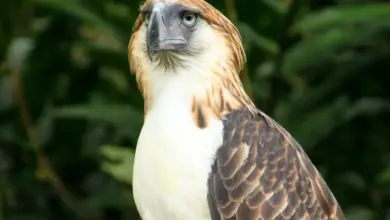Nightjars are small to large nocturnal birds that are found around the world, except for the polar regions.
Some North American species are named as nighthawks.

They are sometimes referred to as goatsuckers, as they were often seen in fields together with goats and sheep, and the myth was born that they were there to suck milk from the teats of goats (the Latin word for goat-sucker or goat-milker is Caprimulgus).
However, instead they fed on the insects that were attracted to livestock. In the past, night-flying birds – such as the nightjars – were suspected of witchery.
The nightjar, as suggested by the name, is strictly nocturnal. Throughout the day, it typically rest quietly in densely vegetated hiding places. At night, they become active as they hunt flying insects in more open landscapes, such as forest clearings, wetlands and along rivers.
Their cryptic appearance blends perfectly into their habitat and they are very difficult to spot during the daytime, when they are usually hidden away sleeping. They are most easily detected at night when light from car headlights are reflected ruby-red from their eyes, as they are sitting on tracks or roads. However, their presence is most often made known by their loud calls given at dusk.
The common name of many of nightjars is is often derived from its call.
They inhabit desert regions, grassland and open wooded areas, and forests. They occur from sea-level up to 1,300 feet or 4,200 meters.
Eighty-nine species are currently known, with 6 species currently being threatened of extinction. Conservationists have noted that populations of Nightjars have been dramatically declining over the last years.
Article and Photos: Antillean Nighthawk nesting in Guantanamo Bay, Cuba

Torpor / Hibernation
Typical nightjars may be capable of daily torpor – a strategy that allows them to reduce their body temperature as a means of saving energy during periods of low environmental temperature or low food availability.
It has already been recorded that the Common Poorwills (Phalaenoptilus nuttallii) can enter extended periods of hibernation as a means of surviving harsh conditions (Brigham, 1992) – which is unique amongst birds.
Other typical nightjars are suspected to be able to do so as well, although this has not been proven yet.
In contrast, the Common NIghthawks do not use torpor (Firman et al. 1993).
Description
They have a variegated plumage is cryptically colored to resemble bark or leaves, which serves well to conceal them on the forest floors.
They have large eyes, large mouths yet very short bills, long wings and tail, and short legs. Their pointed wings and long tails gives them an overall body shape that is similar to that of a kestrel or cuckoo.
Their feet are weak and their legs short – and they usually hop about awkwardly on the ground.
Some species, unusually for birds, perch along a branch, rather than across it. This also helps to conceal them during the day.
These birds are mostly active in the late evening and early morning or at night.
Nighjars have special physical adaptations that facilitate foraging at night and catching prey in mid-air, for example:
- The beak has evolved to be much wider than it is long, and it opens wide both – vertically as well as horizontally. The resulting big gaping mouth allows it to more easily scoop up insects in flight.
- Its large eyes are placed on each side of the head (laterally) – which significantly increases its visual field.
- A reflective membrane behind the retina (tapetum) enhances its vision at night by augmenting the light-gathering ability of its eyes.
- They also have forward-facing whiskers that may either help them funnel food into the mouth or protect the eyes.
Breeding / Nesting
The male performs a dramatic aerial display during courtship, flying first at moderate height, then diving straight towards the ground. When he is about two meters from the ground, he will turn upward.
Near the end of his steep dive a deep booming swo-o-o-onk sound that is caused by air rushing through his wingtips as he flexes his wings downward.
This dive is usually part of a courtship display, but can also be directed at rival nighthawks and intruders (including people).
She lays one to three patterned eggs directly on bare ground, sometimes in raised locations, including stumps or gravel roofs. They particularly favor burned areas in forests.
The incubation is performed mostly by the female and takes about 20 days. Both parents feed the young. The young fledge when they are about 20 – 21 days old.
Nightjars have developed several behavioral adaptations to minimize predation of their nesting young and themselves:
- Their nocturnal (night) lifestyle reduces the likelihood of being detected by daytime predators. During the daytime, they typically sleep on the ground where they are perfectly camouflaged by their “earthy” colored plumage. They almost always change their roost sites on a daily basis.
- When nesting, they sit quietly on the eggs, minimizing any movements that could get them detected.
- If an intruder does get close to the nest, the parents may try to lead them away by first flushing off the nest and when landing feigning injury as they lead the potential thread away from the nest. While the parent performs this distraction display, the young may scatter and freeze.
- The parent who is not incubating the eggs or brooding the young will roost away from the nesting area.
- They may also move the eggs or young to prevent them from being preyed upon.
- Nightjars avoid voicing when they hear the calls made by predatory nocturnal animals, such as owls.
The Feeding Habits of Nightjars / Nighthawks

Species
Subfamily Chordeilinae (nighthawks)
- Genus Nyctiprogne
- Band-tailed Nighthawk, Nyctiprogne leucopyga
- Plain-tailed Nighthawk, Nyctiprogne vielliardi
- Genus Podager
- Nacunda Nighthawk, Podager nacunda
- Genus Lurocalis:
- Rufous-bellied Nighthawk, Lurocalis rufiventris
- Short-tailed Nighthawk, Lurocalis semitorquatus
- Genus Chordeiles:
- Least Nighthawk, Chordeiles pusillus
- Sand-colored Nighthawk, Chordeiles rupestris
- Common Nighthawk, Chordeiles minor
- Lesser Nighthawk, Chordeiles acutipennis
- Antillean Nighthawk, Chordeiles gundlachii
Subfamily Caprimulginae (typical nightjars)
- Genus Nyctidromus – Pauraque
- Genus Phalaenoptilus – Common Poorwill, Phalaenoptilus nuttallii – a unique bird that undergoes a form of hibernation, becoming torpid and with a much reduced body temperature for weeks or months at a time.
- Genus Siphonorhis: Siphonorhis, the Caribbean pauraques – contains the following species:
- Jamaican Pauraque, Siphonorhis americana – presumed extinct (late 19th century); rumors of survival;
- Least Pauraque, Siphonorhis brewsteri
- Cuban Parauque, Siphonorhis daiquiri – Formerly found on Cuba and the West Indies. Considered extinct (prehistoric), however, rumors of survival exist.
- Genus Nyctiphrynus:
- Eared Poorwill, Nyctiphrynus mcleodii
- Ocellated Poorwill, Nyctiphrynus ocellatus
- Yucatan Poorwill, Nyctiphrynus yucatanicus
- Genus Antrostomus
- Chuck-will’s-widow, Antrostomus carolinensis
- Rufous Nightjar, Antrostomus rufus
- Greater Antillean Nightjar, Antrostomus cubanensis
- Hispaniolan Nightjar, Antrostomus cubanesis ekmani
- Tawny-collared Nightjar, Antrostomus salvini
- Yucatan Nightjar, Antrostomus badius
- Buff-collared Nightjar, Antrostomus ridgwayi
- Eastern Whip-poor-will, Antrostomus vociferus
- Mexican Whip-poor-will, Antrostomus arizonae
- Dusky Nightjar, Antrostomus saturatus
- Puerto Rican Nightjar, Antrostomus noctitherus
- Silky-tailed Nightjar, Antrostomus sericocaudatus
- Genus Caprimulgus (some 50-60 species)
- Genus Macrodipteryx (long-primaried nightjars)
- Standard-winged Nightjar, Macrodipteryx longipennis
- Pennant-winged Nightjar, Macrodipteryx vexillarius
- Genus Hydropsalis
- Scissor-tailed Nightjar, Hydropsalis torquata / Hydropsalis brasiliana
- Ladder-tailed Nightjar, Hydropsalis climacocerca
- Genus Uropsalis
- Lyre-tailed Nightjar, Uropsalis lyra
- Swallow-tailed Nightjar, Uropsalis segmentata
- Genus Macropsalis
- Long-trained Nightjar, Macropsalis creagra.
- Genus Eleothreptus
- Sickle-winged Nightjar, Eleothreptus anomalus


